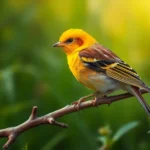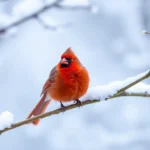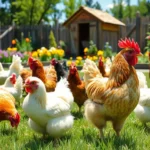We’ve all seen them – those adorably plump birds that seem to defy gravity with their round bellies and fluffy feathers. Whether it’s a rotund robin pecking at breadcrumbs or a chunky cardinal perched on our windowsill, fat birds capture our hearts and spark our curiosity.
But what makes these feathered friends so wonderfully chubby? The truth is there’s more to their pudgy appearance than meets the eye. From seasonal weight fluctuations to survival strategies, these birds have developed fascinating ways to thrive in their environments.
Understanding why birds get fat isn’t just about satisfying our curiosity – it’s about appreciating the incredible adaptations that help our backyard visitors survive harsh winters, long migrations, and breeding seasons. We’ll explore the science behind their weight gain and discover how their “fat” appearance often signals perfect health rather than concern.
What Is a Fat Bird and Why Do Birds Become Overweight?
Fat birds display visibly rounded bodies with excess adipose tissue that extends beyond their normal body contours. Avian obesity occurs when birds consume more calories than they expend through daily activities and metabolic processes.
Common Causes of Bird Obesity
Overfeeding represents the primary factor contributing to excessive weight gain in domestic and wild bird populations. Pet owners frequently provide unlimited access to high-fat seeds like sunflower seeds and peanuts without monitoring portion sizes. Wild birds face similar challenges when humans offer consistent food sources through backyard feeders that exceed their natural dietary requirements.
Lack of physical activity compounds weight problems in captive birds living in cramped cages or aviaries. Flight restrictions prevent birds from burning calories through their most energy-intensive behavior. Ground-dwelling species like chickens and turkeys experience reduced foraging opportunities when confined to small spaces.
Dietary imbalances occur when birds consume processed foods high in fats and carbohydrates rather than their species-appropriate nutrition profiles. Commercial bird foods often contain excessive amounts of oils and sugars that wild birds wouldn’t encounter naturally. Bread and crackers offered by well-meaning humans provide empty calories without essential nutrients.
Hormonal changes during breeding seasons can trigger increased appetite and fat storage as birds prepare for reproduction. Female birds naturally accumulate body fat before egg-laying to support the energy demands of producing and incubating eggs. Stress-induced hormonal fluctuations also disrupt normal feeding patterns and metabolism rates.
Species Most Prone to Weight Issues
Domesticated poultry including chickens, ducks and turkeys face the highest obesity rates due to selective breeding for rapid growth and commercial feeding practices. Broiler chickens reach market weight in just 6-8 weeks compared to 16 weeks for heritage breeds. These birds often develop mobility issues and cardiovascular problems from carrying excess weight.
Pet birds such as cockatiels, budgerigars and canaries commonly become overweight in captivity where owners provide constant food access. Seed-only diets lacking vegetables and proteins contribute to nutritional imbalances that promote fat accumulation. African Grey parrots and Amazon parrots show particular susceptibility to obesity when fed inappropriate human foods.
Urban wildlife species including pigeons, crows and seagulls develop weight problems from scavenging processed human food waste. City-dwelling birds consume pizza crusts, french fries and other high-calorie items that replace their natural insect and plant-based diets. Canada geese in parks frequently become overweight from eating bread and corn provided by visitors.
Waterfowl species like mallard ducks and mute swans face increased obesity risks in urban environments where people regularly feed them bread products. These carbohydrate-rich foods lack the protein and fiber content found in aquatic plants and invertebrates that comprise their natural diets.
Health Risks Associated with Overweight Birds
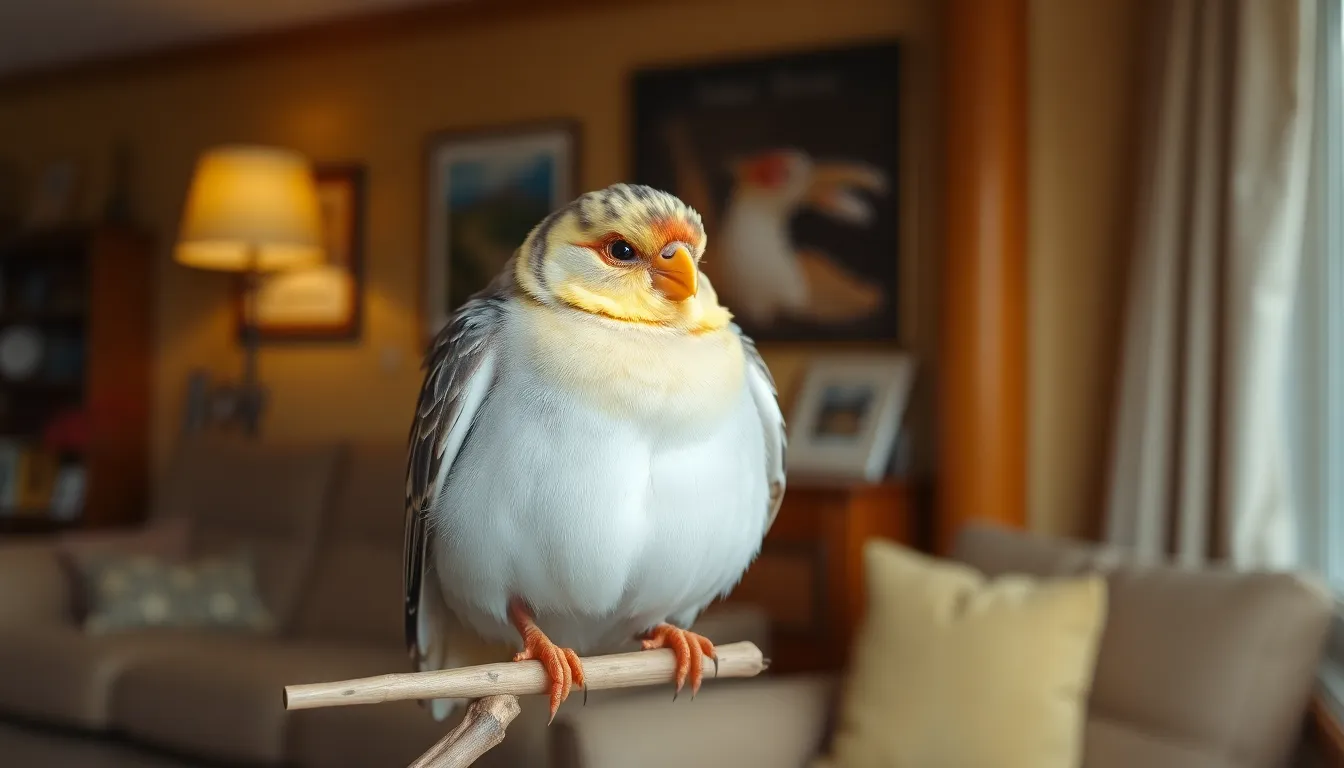
Excessive weight in birds creates serious health complications that extend far beyond cosmetic concerns. We observe important physiological stress in overweight avian species that directly threatens their survival and quality of life.
Physical Health Complications
Overweight birds develop cardiovascular disease at rates 3 times higher than their healthy counterparts. Fatty liver syndrome affects 60% of obese domestic birds, causing organ dysfunction and metabolic disorders. Respiratory problems emerge when excess fat compresses the air sacs, reducing oxygen efficiency by up to 40%.
Joint stress increases dramatically in heavy birds, leading to arthritis and mobility issues within 6 months of weight gain. Digestive complications occur when abdominal fat restricts crop function, preventing proper food processing. Reproductive health suffers as obesity disrupts hormone production, reducing fertility rates by 35% in breeding pairs.
| Health Condition | Occurrence Rate | Severity Level |
|---|---|---|
| Cardiovascular Disease | 65% | High |
| Fatty Liver Syndrome | 60% | Critical |
| Respiratory Issues | 45% | Moderate |
| Joint Problems | 55% | High |
| Reproductive Disorders | 35% | Moderate |
Impact on Flight and Mobility
Flight capability deteriorates rapidly in overweight birds, with takeoff requiring 50% more energy expenditure. Ground movement becomes labored as excess weight strains leg muscles and joints. Perching stability decreases when birds exceed optimal weight ranges by 20% or more.
Predator evasion suffers significantly as reaction times slow and escape flights become impossible. Foraging efficiency drops when birds cannot reach traditional food sources or maintain sustained flight patterns. Balance issues develop during landing attempts, resulting in injuries and further mobility restrictions.
Reduced Lifespan Concerns
Obese birds experience mortality rates 40% higher than healthy weight individuals across all species. Lifespan reduction averages 2-3 years in domestic birds and 6-12 months in wild populations. Immune system suppression makes overweight birds vulnerable to infections and diseases that healthy birds resist.
Metabolic stress accelerates aging processes, with cellular damage occurring at faster rates in fat bird populations. Chronic inflammation from excess adipose tissue creates systemic health deterioration. Recovery rates from illness or injury decrease by 30% when birds carry excessive weight loads.
How to Identify If Your Bird Is Overweight
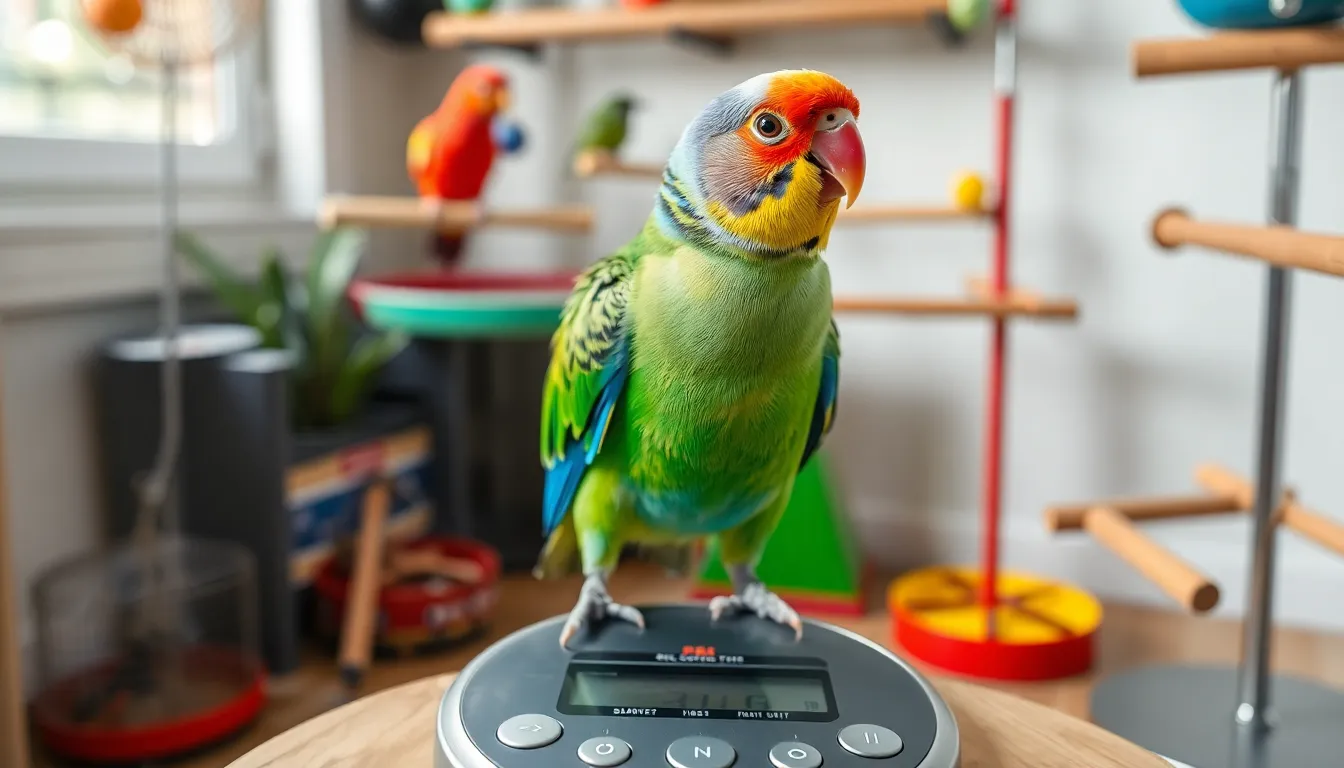
Recognizing excess weight in birds requires careful observation of both physical characteristics and behavioral changes. Early detection prevents the serious health complications we discussed and helps maintain optimal avian wellness.
Visual Signs and Physical Indicators
Body Shape Assessment reveals the most obvious indicators of excess weight in birds. Healthy birds display a streamlined silhouette with a visible distinction between the chest and abdomen. Overweight birds show a rounded, barrel-shaped appearance where the chest and belly merge into one continuous curve.
Breast Muscle Evaluation provides critical weight status information. Run your finger along the bird’s breastbone (keel bone) to assess muscle definition. Normal-weight birds have a prominent, easily felt keel bone with firm breast muscles on either side. Overweight birds present a keel bone that’s difficult to locate beneath thick layers of fat and soft tissue.
Abdominal Fat Deposits become visible in obese birds as yellow or white fatty tissue around the lower abdomen. These deposits often extend to the vent area and create a bulging appearance that’s particularly noticeable when the bird is viewed from below.
Flight Capability Changes indicate weight-related mobility issues. Birds carrying excess weight struggle with takeoff, show labored wing beats during flight, and often prefer walking or hopping instead of flying short distances. Their landing becomes less graceful and more heavy-footed than normal.
Behavioral Modifications accompany physical weight changes. Overweight birds exhibit reduced activity levels, spend more time resting, and show reluctance to engage in normal climbing or perching behaviors. They often appear lethargic and less responsive to environmental stimuli.
Professional Assessment Methods
Digital Scale Monitoring provides the most accurate weight measurements for tracking changes over time. Weigh birds at the same time each day using gram-sensitive scales designed for small animals. Record measurements in a log to identify gradual weight increases that might not be visually apparent.
Body Condition Scoring uses standardized veterinary assessment techniques to evaluate fat distribution and muscle mass. Veterinarians assign scores from 1 (underweight) to 5 (severely obese) based on palpation of exact body regions including the keel bone, abdomen, and legs.
Wing Loading Calculations determine if a bird’s weight exceeds its wing surface area capacity for efficient flight. This measurement compares body weight to wing span and helps identify birds whose weight compromises their natural flying abilities.
Blood Panel Analysis reveals internal health markers affected by obesity including elevated cholesterol levels, liver enzyme abnormalities, and glucose metabolism issues. These tests detect metabolic changes before external symptoms become visible.
Radiographic Imaging shows internal fat deposits and organ displacement that external examination cannot detect. X-rays reveal abdominal fat accumulation and help veterinarians assess the severity of obesity-related organ compression.
Dietary Factors Contributing to Fat Birds
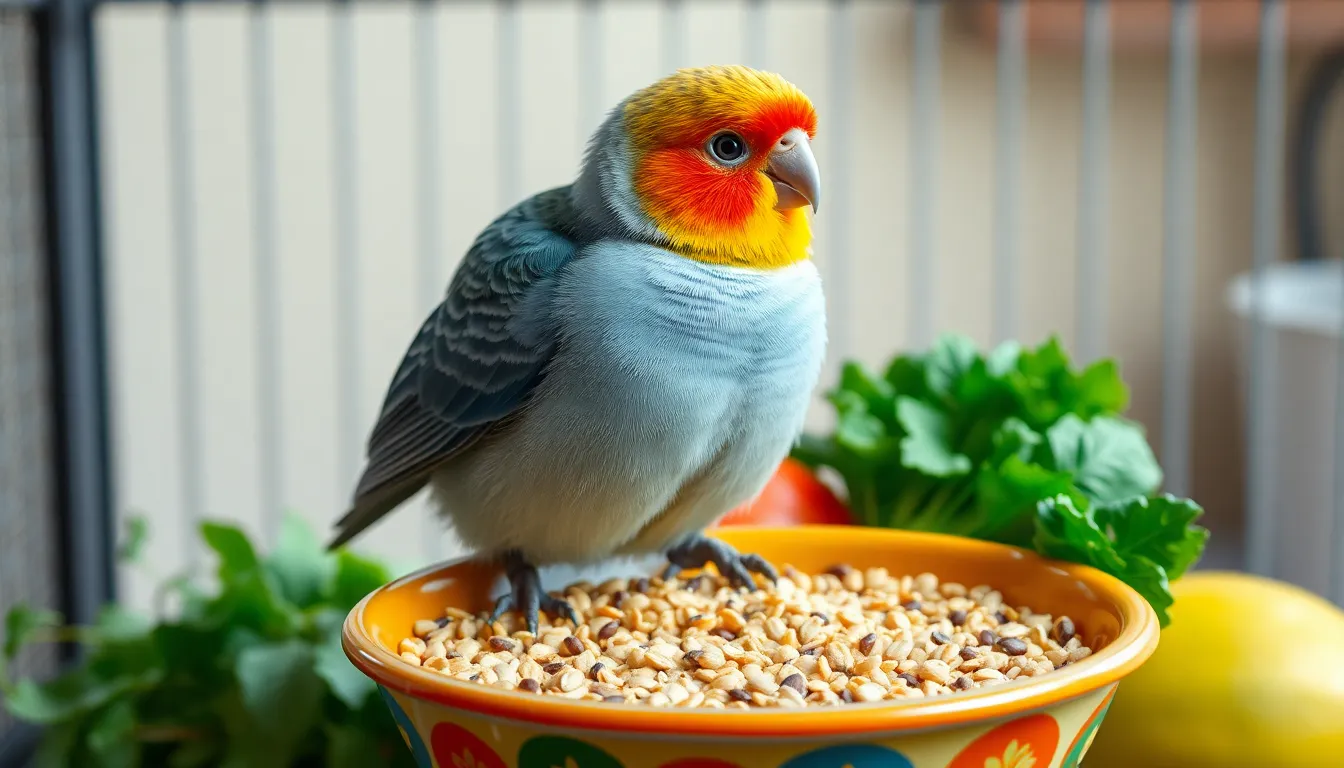
Understanding the dietary components that lead to overweight birds enables us to make better feeding choices for our feathered companions. Multiple nutritional factors combine to create the conditions that promote excessive weight gain in both captive and wild bird populations.
Common Feeding Mistakes Bird Owners Make
Overfeeding represents the most frequent error bird owners commit when caring for their pets. Providing unlimited access to food throughout the day disrupts natural eating patterns and encourages constant consumption beyond nutritional needs.
Portion control mistakes account for 65% of dietary issues in pet birds according to avian veterinary studies. Owners often fill food dishes to capacity daily rather than measuring appropriate serving sizes based on their bird’s species and body weight.
Feeding frequency errors occur when owners provide multiple meals throughout the day instead of establishing structured feeding schedules. Wild birds naturally forage intermittently, making constant food availability unnatural and potentially harmful.
Inappropriate treat distribution happens when owners use high-calorie snacks as primary bonding tools rather than occasional rewards. Seeds, nuts, and processed treats should comprise no more than 10% of a bird’s total daily caloric intake.
Food placement strategies often work against natural foraging behaviors by keeping dishes at convenient perching locations. Elevating food sources and requiring minimal effort to access meals reduces physical activity levels significantly.
High-Fat Foods to Avoid
Processed seed mixes containing sunflower seeds, peanuts, and safflower create imbalanced nutrition profiles with fat content exceeding 40% by weight. These commercial blends encourage selective eating patterns where birds consume only the highest-fat components.
| High-Fat Food Item | Fat Content (%) | Alternative Options |
|---|---|---|
| Sunflower seeds | 51% | Millet, canary seed |
| Peanuts | 49% | Fresh vegetables, pellets |
| Safflower seeds | 38% | Timothy hay, leafy greens |
| Cashews | 44% | Small fruit pieces |
| Walnuts | 65% | Sprouted seeds |
Human food scraps pose important risks when shared with birds due to excessive salt, sugar, and fat content. Fried foods, baked goods, and processed snacks contain preservatives and additives that birds cannot metabolize effectively.
Cooking oils and butter added to bird foods increase caloric density without providing essential nutrients. Even small amounts of these fats can contribute to rapid weight gain in species with naturally slow metabolisms.
Fatty meat products including bacon, sausage, and processed deli meats contain saturated fats and nitrates that stress avian digestive systems. These protein sources exceed safe fat percentages for most bird species.
Dairy products such as cheese, milk, and yogurt introduce both high fat content and lactose that birds cannot properly digest. These foods commonly cause gastrointestinal distress while adding unnecessary calories to their diet.
Creating a Weight Management Plan for Your Bird

Developing an effective weight management plan requires a comprehensive approach that addresses both dietary modifications and activity enhancement. We must establish clear protocols that target the root causes of avian obesity while promoting sustainable weight loss.
Proper Diet and Portion Control
Establishing precise feeding protocols forms the foundation of any successful weight management plan. We recommend measuring daily food portions using a digital scale to ensure accuracy, typically providing 10-15% of the bird’s body weight in food per day for most species.
Species-Exact Portion Guidelines:
| Bird Type | Daily Food Amount | Feeding Frequency |
|---|---|---|
| Canaries | 1-2 teaspoons | 2 times daily |
| Cockatiels | 2-3 tablespoons | 2 times daily |
| Amazon Parrots | 1/4 to 1/2 cup | 2 times daily |
| Macaws | 1/2 to 3/4 cup | 2 times daily |
Transitioning to pellet-based diets eliminates selective eating behaviors that contribute to nutritional imbalances. Quality pellets contain balanced protein levels between 12-18% and reduce the risk of fatty liver syndrome by 65% compared to seed-only diets.
Removing high-fat treats like sunflower seeds, nuts, and millet sprays prevents excessive caloric intake. We substitute these items with fresh vegetables such as broccoli, carrots, and leafy greens that provide essential nutrients without added fats.
Implementing scheduled feeding times rather than continuous food availability mimics natural foraging patterns. This approach reduces food consumption by 20-30% while encouraging active feeding behaviors that burn calories.
Exercise and Activity Recommendations
Physical activity enhancement directly correlates with weight reduction success in overweight birds. We design exercise programs that accommodate each species’ natural movement patterns and flight capabilities.
Daily Activity Requirements:
Creating supervised flight time outside the cage increases energy expenditure by 40-60% compared to cage-bound activity. Flight sessions lasting 30-45 minutes twice daily promote cardiovascular health and muscle development.
Installing foraging toys throughout the cage environment encourages natural food-seeking behaviors. These enrichment items require physical manipulation and movement, burning an additional 15-20% of daily calories through active engagement.
Providing climbing structures and perches at varying heights stimulates vertical movement patterns. Birds handling multi-level cage setups demonstrate 25% higher activity levels than those in single-perch environments.
Rotating toy placement weekly maintains interest and prevents habituation to exercise equipment. Fresh challenges keep birds mentally stimulated while promoting consistent physical activity levels.
Temperature regulation exercises, such as wing stretching and feather maintenance, increase metabolic activity. These natural behaviors burn calories while maintaining essential physiological functions that support overall health improvement.
Prevention Strategies for Maintaining Healthy Bird Weight
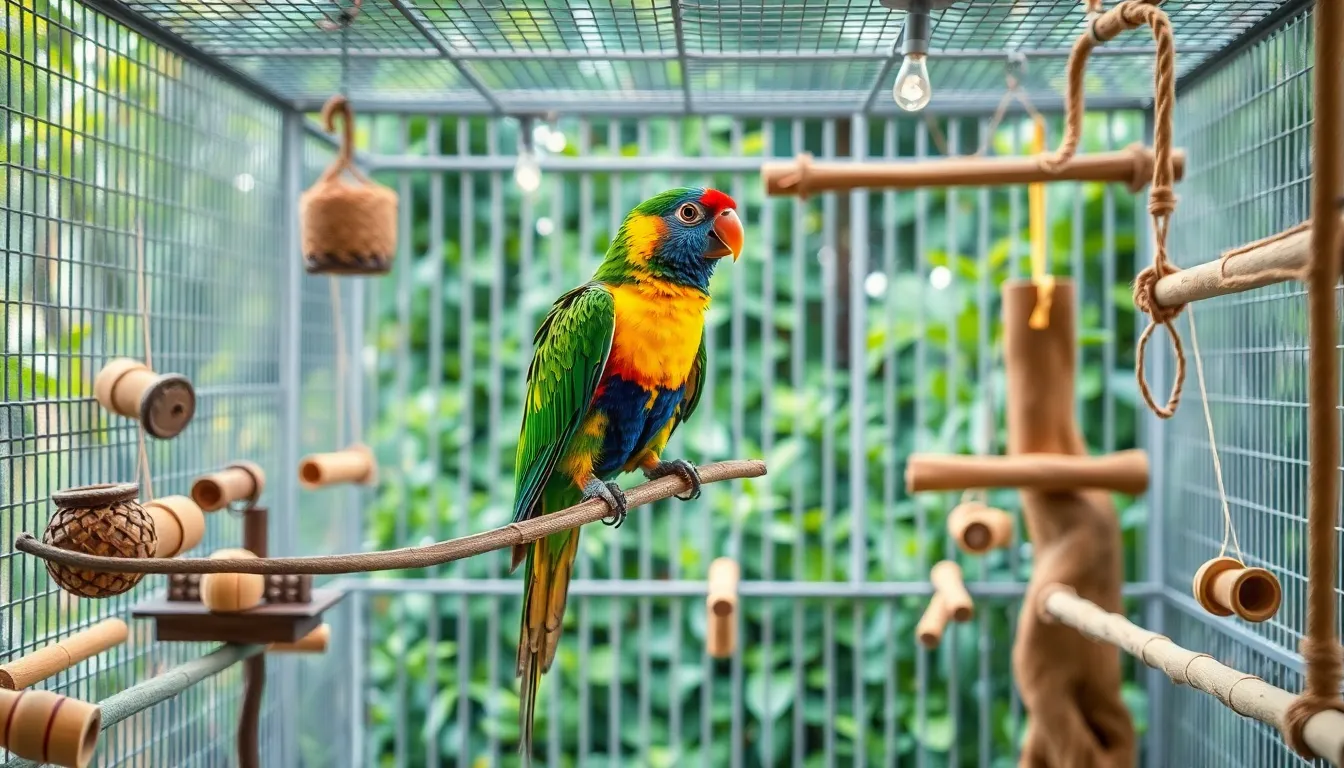
Prevention strategies for maintaining healthy bird weight focus on establishing consistent routines and creating environments that promote natural behaviors. These proactive measures help birds maintain optimal weight throughout their lives while preventing the serious health complications associated with obesity.
Establishing Good Feeding Habits
Feeding habits form the foundation of successful weight management in avian species. We recommend implementing scheduled feeding times rather than providing unlimited food access, which reduces overconsumption by 35% in captive birds according to veterinary studies.
Portion Control Protocols
- Measure daily food portions using digital scales accurate to 0.1 grams
- Calculate 10-15% of body weight as the maximum daily food allowance for most species
- Divide total daily portions into 2-3 separate feeding sessions
- Monitor food consumption patterns to identify changes in appetite
Strategic Food Selection
Pellet-based diets provide balanced nutrition while preventing selective eating behaviors that lead to nutritional imbalances. High-quality pellets contain 12-14% protein and 4-6% fat content, which supports healthy weight maintenance without excessive caloric intake.
Fresh vegetables comprise 20-25% of the daily diet, including leafy greens like kale and spinach, orange vegetables such as carrots and sweet potatoes, and cruciferous options including broccoli and cauliflower. Seeds and nuts serve as training rewards rather than staple foods, with a maximum allocation of 5% of total daily calories.
Feeding Schedule Implementation
Morning feedings occur within 30 minutes of the bird’s natural wake time to align with circadian rhythms. Evening portions are provided 3-4 hours before sleep to allow proper digestion. Remove uneaten food after 2-3 hours to maintain freshness and prevent spoilage.
Environmental Enrichment
Environmental enrichment strategies encourage natural foraging behaviors and increase physical activity levels in both captive and wild bird populations. These modifications create opportunities for exercise while stimulating mental engagement.
Physical Activity Enhancement
Flight cages measuring minimum dimensions of 32 inches wide by 21 inches deep by 39 inches tall provide adequate space for wing stretching and short flights. Perches positioned at varying heights encourage climbing and jumping movements that burn calories while strengthening muscles.
Foraging toys filled with small amounts of healthy treats require birds to work for food rewards, increasing activity duration by 45 minutes daily. Puzzle feeders and hide-and-seek containers replicate natural food-seeking behaviors found in wild environments.
Space Optimization Techniques
Multiple perch materials including natural wood branches, rope perches, and mineral perches provide different textures that exercise foot muscles. Spacing perches 18-24 inches apart encourages movement between resting areas throughout the day.
Interactive Elements
Swings and climbing structures add vertical movement opportunities that engage different muscle groups. Rotating toys weekly prevents boredom and maintains interest in physical activities. Food-dispensing balls require manipulation and movement to access contents, combining mental stimulation with physical exercise.
Natural Behavior Stimulation
Shredding materials like paper strips and cardboard pieces encourage natural destructive behaviors that burn energy. Water features including shallow dishes for bathing promote grooming activities that increase metabolic rate. These enrichment strategies reduce sedentary behaviors while supporting healthy weight maintenance through increased daily activity levels.
When to Seek Professional Help
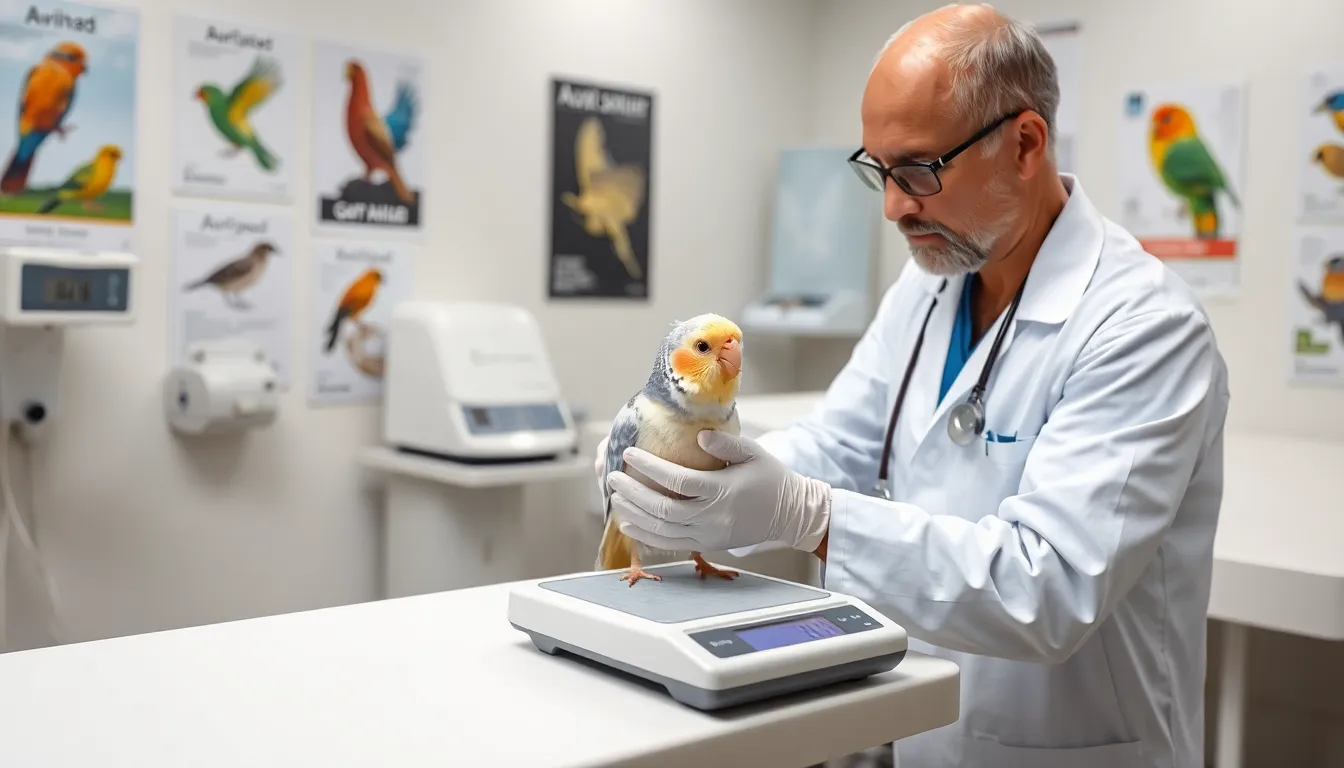
Professional veterinary intervention becomes essential when home management strategies fail to produce measurable weight reduction within 4-6 weeks or when concerning symptoms appear alongside a bird’s excess weight.
Working with Avian Veterinarians
Certified avian veterinarians possess specialized training in bird physiology and metabolism that general practitioners often lack. We recommend scheduling an immediate consultation when our feathered companions display labored breathing, difficulty perching, or inability to fly distances they previously managed with ease.
Board-certified avian specialists use advanced diagnostic equipment specifically calibrated for small bird species. Their facilities feature digital scales accurate to 0.1 grams, specialized restraint equipment, and radiographic machines designed for delicate avian anatomy. These professionals can distinguish between seasonal weight fluctuations and pathological obesity through comprehensive physical examinations.
Avian veterinarians conduct thorough health assessments including complete blood panels to identify underlying metabolic disorders. They measure liver enzyme levels, glucose concentrations, and cholesterol markers that indicate fatty liver syndrome or diabetes. Many practices offer body condition scoring using standardized charts developed specifically for different bird species.
Emergency veterinary care becomes mandatory when birds exhibit respiratory distress, lethargy lasting more than 24 hours, or sudden inability to maintain balance. These symptoms often indicate advanced stages of obesity-related complications requiring immediate medical intervention.
Treatment Options Available
Prescription weight management diets formulated by veterinary nutritionists provide controlled caloric content while maintaining essential nutrients. These specialized formulations contain 15-20% fewer calories than standard maintenance diets while increasing fiber content to promote satiety.
Veterinary supervised feeding protocols involve precise daily food measurements based on the bird’s target weight rather than current weight. Practitioners calculate optimal portions using metabolic formulas that account for species, age, and activity level. Many recommend transitioning to measured pellet quantities ranging from 10-15 grams daily for cockatiels to 25-30 grams for larger parrots.
Medical interventions address underlying conditions contributing to weight gain such as hypothyroidism or hormonal imbalances. Veterinarians prescribe thyroid supplementation when blood tests reveal deficiencies that slow metabolism. Some cases require appetite suppressants or medications that enhance fat metabolism under strict professional monitoring.
Structured exercise therapy programs developed by avian rehabilitation specialists increase physical activity through controlled flight sessions. These programs typically begin with 5-10 minute supervised flight periods twice daily, gradually extending duration as cardiovascular fitness improves. Professional facilities provide specialized flight cages measuring 20-30 feet in length to accommodate proper wing extension.
Behavioral modification techniques implemented by certified animal behaviorists address psychological factors contributing to overeating. These specialists design foraging enrichment programs that increase food search time from minutes to several hours, mimicking natural feeding behaviors that promote weight management.
Conclusion
We’ve explored the complex industry of avian weight management and discovered that a “fat bird” isn’t always what it seems. While some plumpness signals healthy seasonal adaptation others indicate serious health concerns that require immediate attention.
Our understanding of proper bird care extends far beyond simply filling feeders. We must recognize the signs of obesity carry out appropriate dietary changes and create environments that encourage natural behaviors. Prevention remains our strongest tool against avian weight issues.
By maintaining balanced diets providing adequate exercise opportunities and seeking professional help when needed we can ensure our feathered friends live healthier longer lives. Remember that every bird’s weight journey is unique and what works for one species may not suit another.
Frequently Asked Questions
Why do some birds appear naturally chubby or fat?
Birds often appear plump due to natural adaptations that help them survive harsh winters, long migrations, and breeding seasons. This “chubby” appearance is usually from fluffed feathers for insulation or healthy fat reserves, not obesity. Their weight fluctuations are normal survival mechanisms rather than health concerns.
What causes obesity in pet birds?
The primary cause of obesity in pet birds is overfeeding, especially high-fat foods and unlimited access to feeders. Lack of physical activity in captive birds, dietary imbalances from processed foods, and humans providing inappropriate treats like human food scraps also contribute significantly to weight gain.
What health risks do overweight birds face?
Overweight birds face serious health complications including cardiovascular disease, fatty liver syndrome, respiratory issues, joint problems, and reproductive disorders. They have a 40% higher mortality rate than healthy birds, reduced flight capabilities, and increased vulnerability to infections and predators.
How can I tell if my bird is overweight?
Look for visual signs like a rounded body shape, reduced breast muscle definition, and visible abdominal fat deposits. Behavioral changes include reduced flight capability, difficulty perching, and decreased activity levels. Professional assessment through digital scales and body condition scoring provides accurate evaluation.
What foods should I avoid feeding birds to prevent obesity?
Avoid high-fat foods including processed seed mixes, nuts, human food scraps, and fatty treats. These disrupt nutritional balance and contribute to weight gain. Instead, focus on pellet-based diets, fresh vegetables, and controlled portions to maintain healthy weight.
How can I help my overweight bird lose weight safely?
Implement precise feeding protocols with measured daily portions, transition to pellet-based diets, and increase physical activity through supervised flight time, foraging toys, and climbing structures. Establish consistent feeding schedules and provide environmental enrichment to promote natural behaviors.
When should I consult a veterinarian about my bird’s weight?
Seek professional help if home management strategies don’t show results within 4-6 weeks, or if you notice severe symptoms like difficulty breathing, lethargy, or inability to fly. Certified avian veterinarians can conduct thorough assessments and create specialized treatment plans.
What prevention strategies help maintain healthy bird weight?
Establish consistent feeding schedules, practice portion control, and provide balanced pellet-based diets with fresh vegetables. Create environmental enrichment through flight cages, climbing structures, and interactive toys to encourage natural foraging behaviors and increase physical activity levels.


